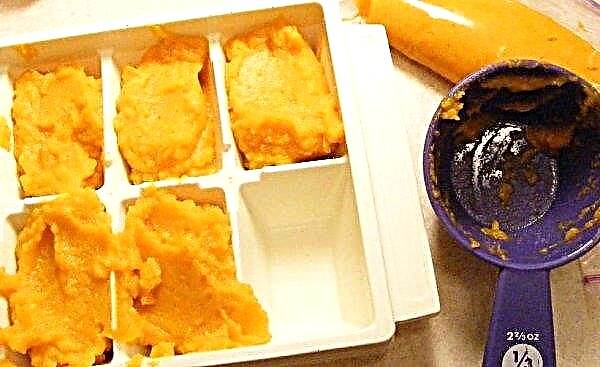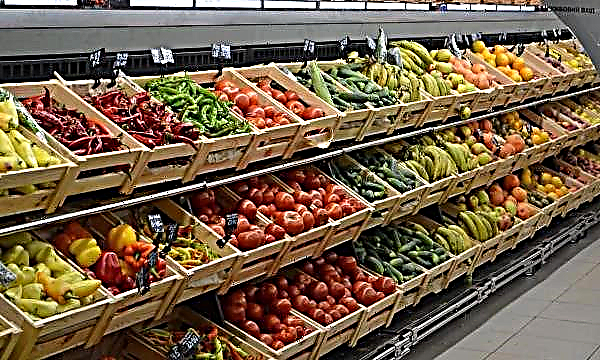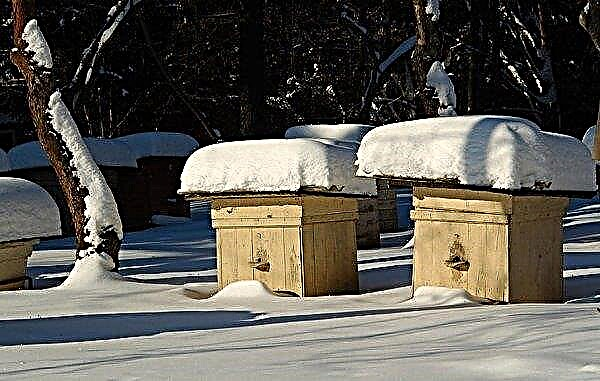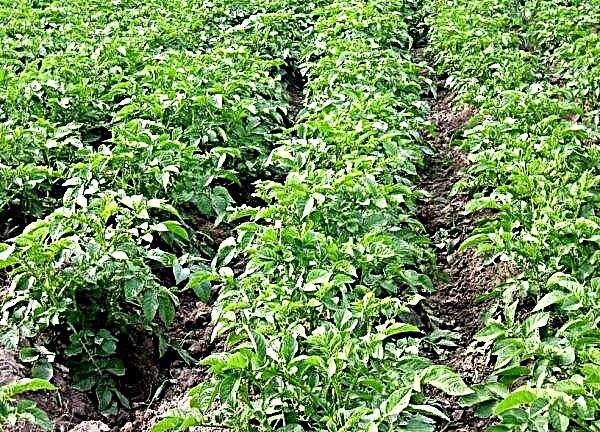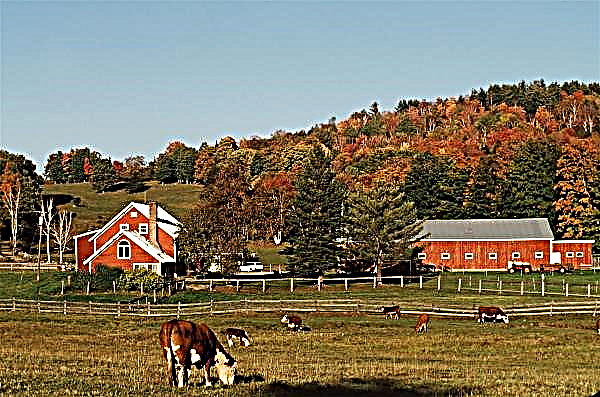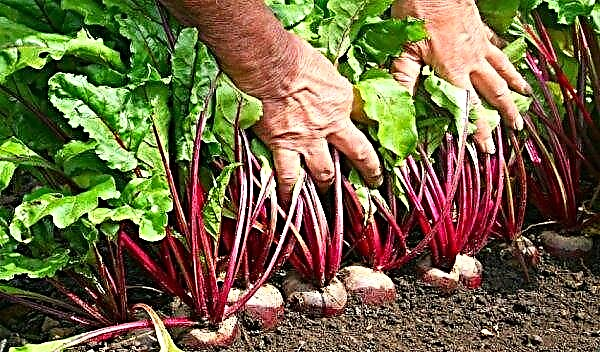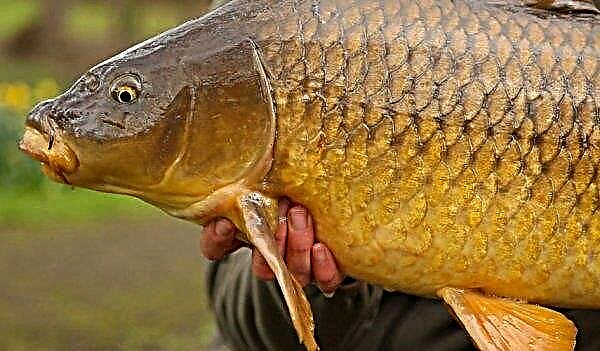Potato, despite its southern origin, is grown in many climatic zones. Culture breeding has contributed to the development of qualities such as winter hardiness and drought tolerance in varieties. You will learn about one of the particularly resistant varieties, called Fortress, from this article.
History of Variety Breeding
Potato Krepysh was co-authored by a group of breeders of the All-Russian Research Institute of Potato Economy named after A. G. Lorch, which is located in the village. Kraskovo, Moscow region. In 2005, the variety was included in the register of breeding achievements of the country. Fortress can be grown throughout the Russian Federation, including the northern region and the Far East. Popular in the industrial economies of the countries of the former Soviet Union.
Did you know? An unusual potato variety grows in the foothills of the Andes, more like berries than root crops. The culture grows above the ground and is able to withstand -8 ° C.
Characteristic and Description
Fortress has a table purpose, it is also used for processing on potato products.
Description of tops and tubers
The bush is medium height about 60 cm, compact, straight stems. Foliage varies from green to dark green, not large. Sheet plates along the edge are wavy. During flowering, on a strong peduncle, a hat of red-violet flowers opens.

The tubers are oval, oblong, with a light yellow peel. Weight 80–105 g. The surface of the fetus is even with shallow eyes, without potholes. Commodity yield of root crops up to 99%, product safety 97%. The flesh is creamy, has a delicate taste, without wateriness. The starch content is minimal, 10-12%. When cooking, the flesh is friable, during prolonged heat treatment does not spread, does not lose shape.
Productivity
During tests of the variety in the Moscow region, a yield of 276 c / ha was recorded. On average, farmers harvest up to 200–250 kg / ha.
Ripening and harvesting dates
According to the description in the register of varietal crops, Krepysh belongs to the so-called ultra-early or early ripening varieties. After the appearance of full seedlings, the potato ripens within 45–55 days. Root crops are not kept for long in the land, harvesting immediately according to the declared ripening dates.
Resistance to disease
Fortress is highly resistant to potato cancer, not susceptible to attacks of golden nematodes. Its fruits and tops are medium resistant to late blight.
Plus qualities and possible disadvantages
One of the advantages of Krepysh, it’s the main difference from other super-early varieties, is the ability to be stored for a long time in early ripening. Tubers do not fade or rot when properly stored until spring.
- Other advantages of the variety:
- early ripening;
- smooth fruits with clean skin;
- high productivity;
- good taste;
- perfectly tolerates transportation;
- not susceptible to diseases and pests;
- drought tolerance;
- not capricious to growing conditions.
 The disadvantage is the need for hilling bushes more often than other varieties.
The disadvantage is the need for hilling bushes more often than other varieties.Agriculture Potato Growing
For landing, choose a flat, open to the sun for most of the day place. The site should be flat or slightly elevated to avoid moisture accumulation.
Optimal landing times
In the southern regions, landing is possible in late April, in the middle lane in the beginning - mid-May. It is important that the air humidity is low, and the soil is warmed up to + 8 ° C, to a depth of 12 cm.
Important! If the humidity during planting is high, the tubers in the soil will rot.
Crop rotation rules
Fortress can be planted after legumes and root crops. It will be ideal to plant after green manure, which loosens the soil and restores its fertility. It is undesirable to plant potatoes for 2 years in a row in one place.
Optimal soil composition
To create the optimal composition and structure of the soil for potatoes, heavy soils are diluted with sand and peat, organic matter is added.

Under the autumn digging make on 1 m²:
- sand - 3-4 kg;
- peat - 2-3 kg;
- humus - 7-8 kg.
If the soil in the plot is acidic, then wood ash up to 400 g is added to the composition.
Preparing planting material
Like the soil, tubers are prepared for planting in the fall. After harvesting, the selected material is landscaped and laid for storage, previously sprayed with fungicide. A month before the intended planting, it is removed from the storage location for germination. Ready to plant material is sprayed with an aqueous solution of boric acid 1%, for prevention.
Landing technology
Wells are prepared at a distance of 60 cm from each other, observing a row spacing of 30 cm. The tubers are deepened by 8–10 cm. When laying in the hole, the eyes should look up, which will accelerate germination. The surface of the beds can be mulched to protect the soil from drying out, tubers and seedlings from pests.

Important! Organics are introduced only in the fall, when preparing the site. The introduction into the holes is subsequently fraught with bitterness in taste or watery potatoes.
Potato care after planting
1-2 weeks after planting, you need to look at the growth rate of seedlings - if it is weak, then top dressing is needed. To do this, use a mullein infusion diluted with 1:15 water. After the fertilizer is absorbed, the soil is loosened and sprouted, hiding the bare part of the stems.
Loosening is also carried out at the flowering stage and after it - it saturates the tubers with oxygen, improves the penetration of nutrients.

Watering is carried out before flowering and at the end of it, with warm, settled water, under the root. Moisture should not get on the green parts of the plant. After watering, the earth is loosened and spud. The irrigation frequency of the soil is regulated, focusing on the frequency of rainfall. If the soil has dried to a depth of 15 cm, it must be moistened.
During flowering, for better formation of large tubers, plants are fed with a liquid solution of potassium sulfate and double superphosphate - 15 g per 10 l of water, 0.5 l per root for each bush. 2-3 weeks before harvesting, the last top dressing is carried out. Manure (250 ml) and superphosphate (30 g) are dissolved in 10 l of water, watered under the root.
Did you know? One of Iceland’s strong alcoholic beverages, Brennivin, is world famous and is made from potatoes.
Since resistance to late blight is average, infection is possible under the influence of various factors. The disease manifests itself in rot on the tops, gradually moving to tubers and destroying the entire crop from bush to bush. At the first signs of the disease, fungicide is sprayed, doing this in dry, calm weather. “Radomil Gold” in the amount of 60 g is diluted in 10 liters of water; the multiplicity of treatments 4, the interval between them is 7 days.
You can fight with the Colorado potato beetle, as well as with other bugs and their larvae with the help of a wide-spectrum insecticide “Akarin”. The solution is prepared in a proportion of 6-8 ml per 1 liter of water, sprayed on the leaves.

Harvesting and storage
Potato harvests can be harvested both manually and mechanized. After harvesting, the potatoes must be well dried to prevent mold and rot in the storage. The store itself is annually disinfected before laying with ordinary whitewash. The room must have ventilation, be dry, the storage temperature of vegetables is +1 ... + 4 ° C.
Fortress is distinguished by good keeping quality; without loss of presentation, the variety is stored until late spring. So, farmers do not in vain praise the yield of the variety and resistance to disease, note its delicate taste and dense, not watery pulp. It is not surprising that Krepysh is popular for growing for sale and is in demand by the consumer.



